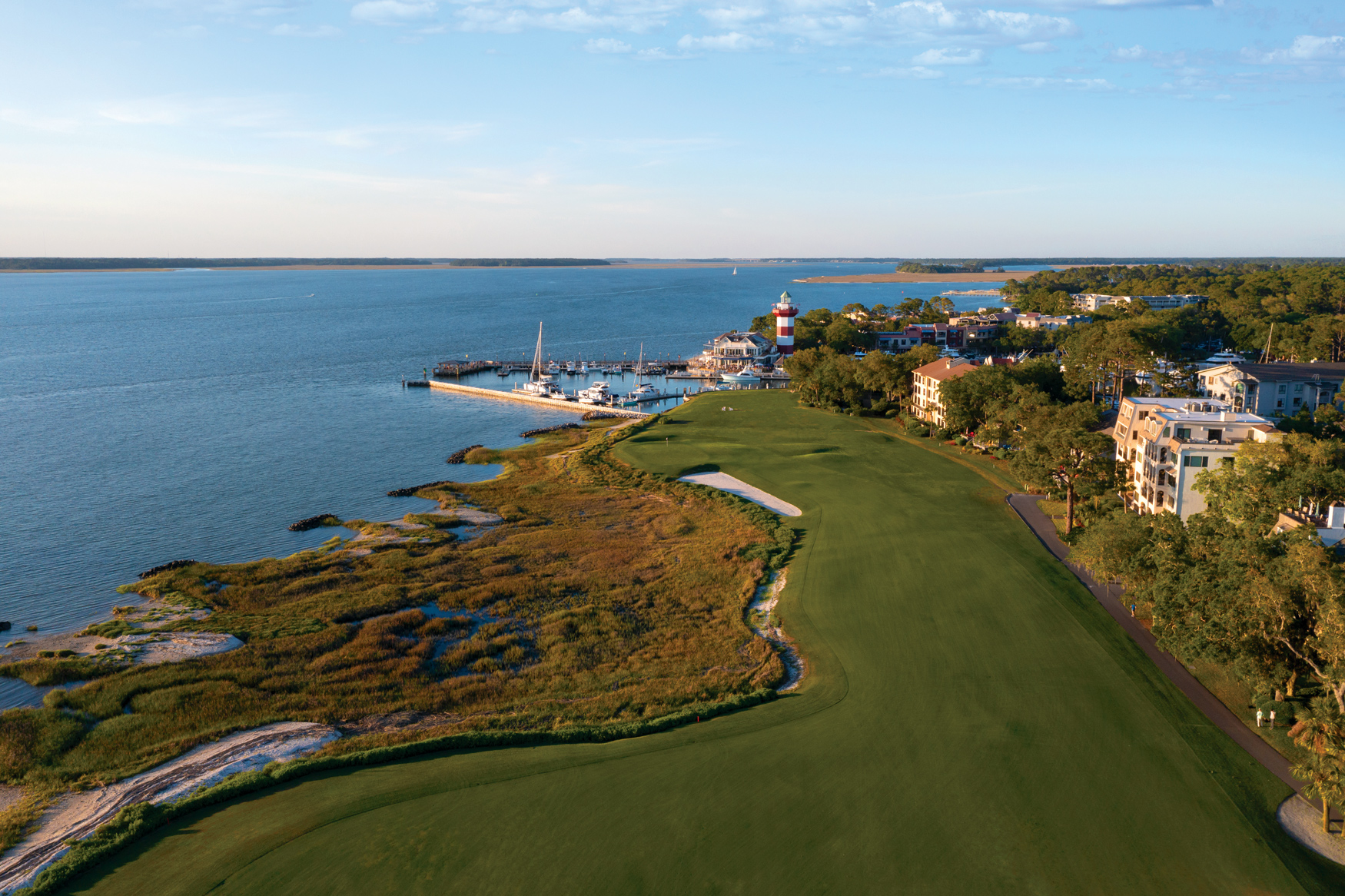
Traveling golfers seeking an ancient culture coupled with five-star luxury should explore Turkey. The best place to start is where you will land, Istanbul, the historic gateway between east and west, before heading south to Belek, a haven of sunkissed golf. Paul Trow is your guide
Istanbul, home to 15 million people across 39 districts, has been the Silk-Road sliding door connecting the continents of Europe and Asia since the dawn of civilization.
Founded as Byzantium by Greeks in 667BC and rebranded in 330AD as Constantinople, this economic powerhouse served as the capital city for four empires—Roman, Byzantine, Latin and Ottoman—and was the seat of eastern Mediterranean Christianity until its fall to Islam in 1453.
The dismantling of the Ottoman Empire after World War I led to the city’s renaming as Istanbul, Turkey’s restyling as a secular republic under the presidency of Mustafa Kemal Atatürk, and the government being moved to the mountain citadel of Ankara.
However, the loss of ‘capital city’ status affected Istanbul not a jot. If anything, its allure was enhanced. In 2018, the city hosted a record 13.4 million tourists, many of them delivered to its two international airports by Turkish Airlines flights from 11 North American hubs—New York (JFK), San Francisco, Los Angeles, Chicago, Houston, Toronto, Washington, Boston, Miami, Atlanta and Montreal.
Istanbul consists of three land tracts divided by two waterways—the Bosphorus, between the Sea of Marmara to the southwest and the Black Sea to the northeast, and the Golden Horn, an estuary that flows in the opposite direction, from southeast to northwest.
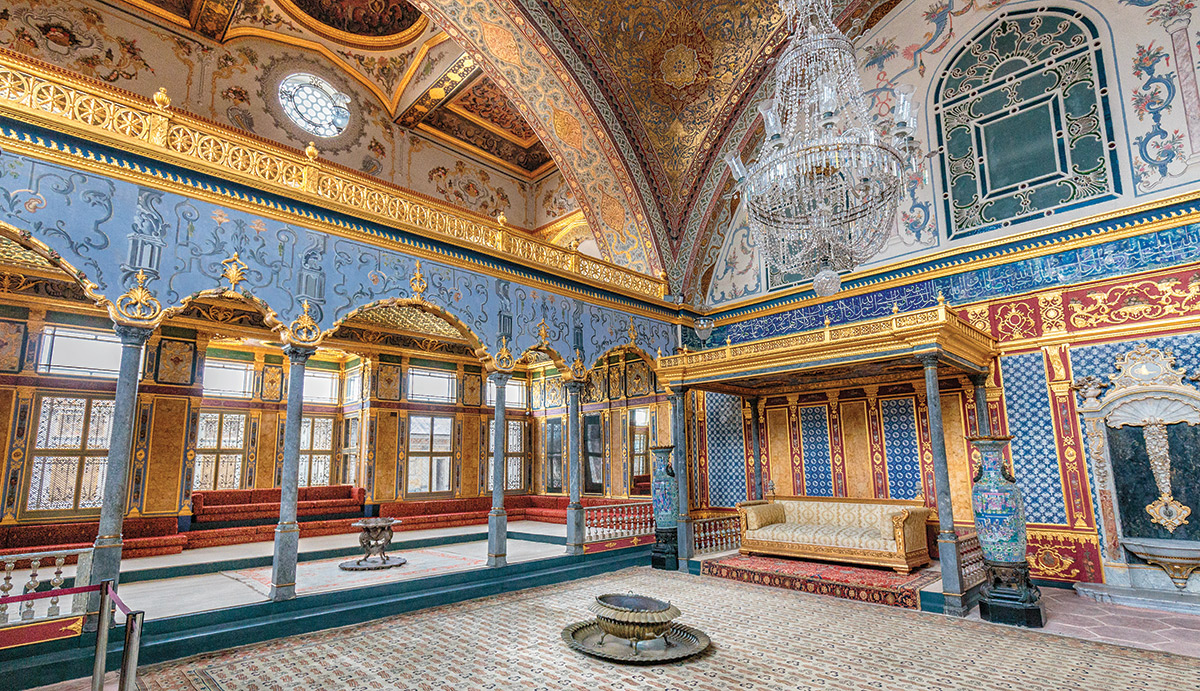
Its commercial activities center upon the harbors of Eminönü, Şişli and Beşiktaş while the majority of the population lives in and around Maslak, Bebek and Sariyer to the north, and Üsküdar and Beykoz on the Asian side.
Palaces, mosques and churches frame Istanbul’s magnificent skyline as visible reminders of its cultural and religious diversity, happily co-existing with restaurants, galleries and nightclubs. But for time-pinched visitors the must-see sights narrow down to an iconic half-dozen…
Created in 536AD by Byzantine emperor Justinian, the Hagia Sophia was first a church of staggering beauty, then a mosque and finally a museum. The Grand Bazaar, a haggler’s paradise surrounded by thick walls and occupying an entire quarter, was arguably the world’s first shopping mall. Dating from 1498-1505, it can be entered via 11 gates.
Topkapi Palace, built in the 15th century beside the Bosporus, was the Ottoman Empire’s headquarters. Its opulent courtyards are lined with hand-painted tiles and intricately decorated battlements, walls and towers. The highlights are an object bound in swaddling clothes purported to be John the Baptist’s right arm, but perhaps more appealing is the Harem, where the sultan’s concubines and children amused themselves in aromatic splendor.
Sultan Ahmet I’s gift to the city was the beautiful structure known as the Blue Mosque. It caused a furore when finished in 1616 as it had six minarets (the same as the Great Mosque of Mecca). A seventh minaret was eventually gifted to Mecca to assuage the embarrassment.
The 14th century Genoese Galata Tower is one of Istanbul’s most recognizable landmarks. Take the elevator or stairs for panoramic views over the city from the top balcony. High on the hill above Sultanahmet district, the Süleymaniye Mosque is part of an UNESCO World Heritage site. Built (1549-75) for Süleyman the Magnificent, its interior is covered by a soaring dome.
Not surprisingly, given this confluence of culture and ancient history, Istanbul is a honey pot for students and scholars. Most established colleges in Istanbul are backed by the government, but the city also has several private universities. The most prominent of these, the oldest American school in existence in its original location outside the U.S., was founded in 1863 by Christopher Robert, a philanthropist, and Cyrus Hamlin, a missionary, and continues to this day as a boarding high school under the name of Robert College.

Istanbul is also home to three golf clubs, including one of the four oldest on the continent of Europe. Founded with 12 holes as Constantinople GC in the Okmeydani district in 1895, it moved to Bebek in 1911 and became the 9-hole Bosporous GC before relocating again in 1920 to Maslak with eight holes, eventually expanding to 18. Today, known as Istanbul GC, it is a 9-hole layout on the same site—compact by modern standards but conveniently close to the business center.
Kemer Golf & Country Club, a 20-minute drive north of Maslak in Belgrad Forest, has superb leisure facilities and restaurants, plus an 18-hole course with stunning countryside views. Then an hour’s drive west leads to Silivri, a Sea of Marmara retreat, and Klassis Golf & Country Club. Klassis offers an 18-hole course, the brainchild of English double major champ Tony Jacklin.
Three decades ago, Belek was a sleepy coastal village with impressive inland views of the snow-capped Taurus Mountains and glorious golden beaches where Caretta turtles lay their eggs. Since then it has blossomed, with government encouragement, into one of the Mediterranean’s premier golf destinations.
This scenic coastline boasts 11 thoroughly modern and attractively maintained golf developments, all carved from pine and eucalyptus forests and showcasing, at the last count, a total of 288 holes.
Outside Antalya (an hour’s flight south from Istanbul), this golfing oasis boasts more than 50 five-star hotels, where full-board means virtually unlimited food and beverage. Teeming with colonies of privately-owned villas and apartments, it also offers a kaleidoscope of old-fashioned retail therapy for jewelry, designer apparel and local art.
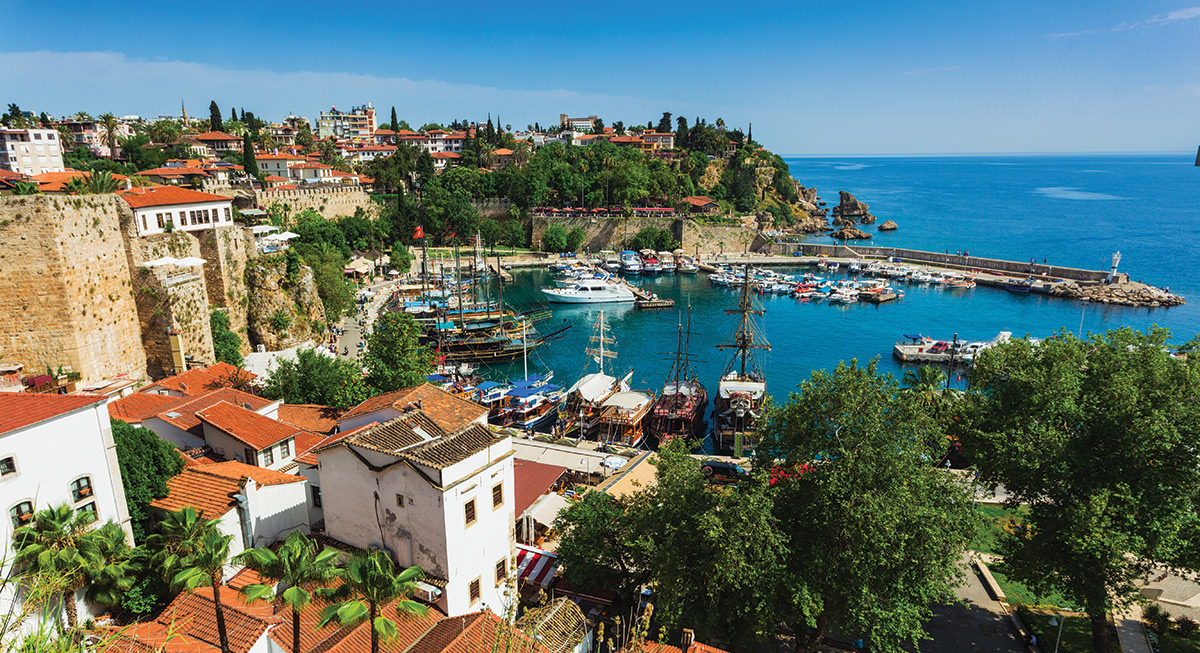
More supine relaxation can be enjoyed in the spas. Belek presents a sophisticated and historic range of invigorating procedures, from a good scrub in a piping hot hammam (Turkish bath) to Thalasso therapy, founded locally by Hippocrates, the father of medicine in the ancient world. The good doctor noticed that when fishermen cut their hands on hooks, their wounds never became infected. He developed an entire therapy system after concluding the salt water and seaweed was protecting them.
The hotels all offer an ethnic variety of restaurants, but at least one evening should be spent savoring the indigenous cuisine (a sumptuous blend of fresh meat, kebabs, cooked vegetables and salads). A typical repast might consist of dips (like humus), dolma (stuffed vine leaves) and mezes, followed by some locally-caught fish or a choice of grilled meat from the Ocakbaşı (charcoal barbeque). The coup de grâce will be a baklava (a sugary pastry) or Turkish Delight, made from pistachio nuts, all washed down by a strong cup of Turkish coffee, a bottle of Efes, the national beer, or perhaps a glass of Yakult (red) or Cankaya (white) wine.
Belek might now be a haven of modernity, yet it lies in the cradle of civilization. Nearby links with the distant past include the erstwhile cities of Side, Phaselis, Termessos and Perge, dating from 1200BC following the fall of Troy. Meanwhile, Aspendos, beside the River Eurymedon in the Koprulu Canyon National Park, has an amphitheater that can hold up to 15,000 spectators for concerts and dramatic performances, along with an aqueduct spanning more than half a mile and a basilica-topped Acropolis.
To explore the local geography, no visit is complete without witnessing the Manavgat and Kursunlu waterfalls, the Carain caves, the lakes at Isparta in the Taurus Mountains, and Antalya’s picturesque harbor where the Roman emperor Hadrian once dined.
Skiing in the Taurus Mountains can be accessed via a network of winding roads, scattered donkey carts and ubiquitous herds of goats, while a day at sea is another popular diversion. A journey west to the resort of Kemer by gulet (a two- or three-masted sailing vessel) will stop off at Phaselis, colonized by Greeks from the island of Rhodes, so passengers can swim and snorkel. Safari-style tours, fishing, rafting, diving and trekking are also popular.
A day on any itinerary must be found for a guided tour of Antalya, a venerable port with a population in excess of one million. Its museum is filled with Roman and Greek archaeological finds, including a naked statue of the god Apollo, while the old quarter with its walled city is now rejuvenated with fashionable boutiques and restaurants. For seasoned barterers looking to establish a fair price, Antalya is replete with leather goods, textiles, jewelry and carpets.
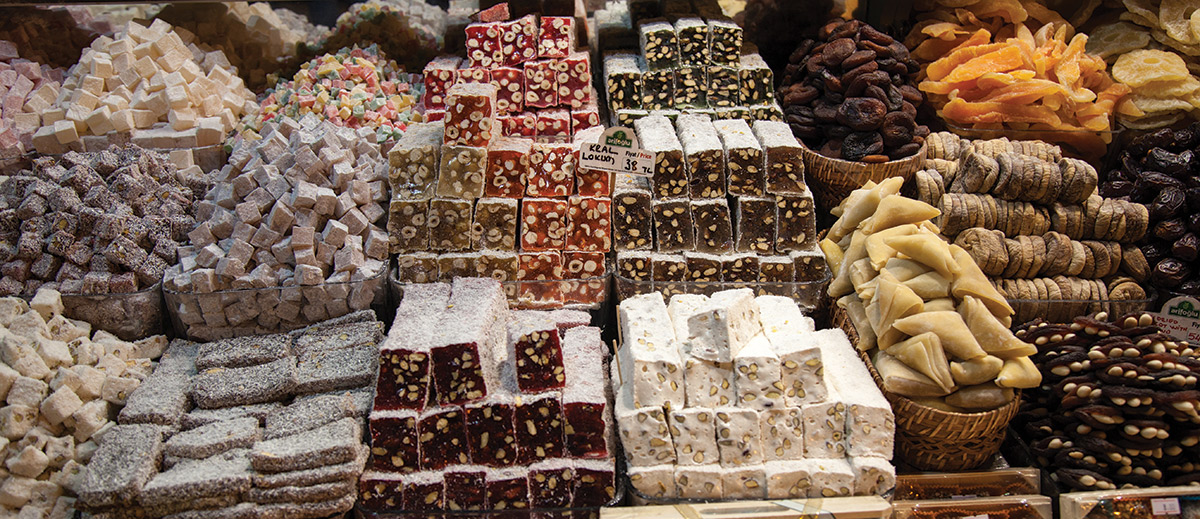
Golf arrived in Belek in November 1994 and Northern Ireland had more than a passing influence on this genesis. David Feherty, then a recent Ryder Cup star before retiring to become a prominent TV celebrity, teamed up with fellow Ulsterman and former Tour pro David Jones to design the National Golf Club. The upshot was an imaginative 27 holes with a variety of doglegs, blind approaches and intrusive lakes. The signature 18th only measures 370 yards, but no matter how far you hit your drive you still have to negotiate the pond that shields most of the green. No wonder Feherty’s known for his fiendish sense of humor!
The Old at Gloria, characterized by pine vistas and expansive lakes, was the next Belek course to open in 1997. The New, designed like the Old by Frenchman Michel Gayon, is heavily bunkered and undulating.
Across the road from Gloria, Robinson Nobilis— designed by the late Dave Thomas, a former Ryder Cup player—is routed through mature conifers and meandering waterways. The Welshman’s claim to fame, apart from twice finishing runner-up in the [British] Open, was to co-design The Belfry near Birmingham, England, with Peter Alliss.
Another 1998 creation was the 27-hole Titanic Golf Club, close to a windy stretch of coastline. Designed by English architects Hawtree, it offers rugged Mediterranean views on its second nine, though, ironically, the first and third nines are more threatening.
Antalya GC (2003) consists of two 18-holers—the Pasha and PGA Sultan—both constructed by Jones, who added the Kaya Palazzo to his portfolio four years later. The Pasha is an open resort layout but the PGA Sultan is a serious tournament venue with tight, rolling fairways, a dozen water hazards and nearly 100 sand traps. It was here in 2012 that a U.S. team, including 2017 PGA champion Justin Thomas, won the amateur Eisenhower Trophy.
Just as Antalya Golf Club has two courses, it also has two hotels—the Kempinski Dome, an architectural tip of the hat to pre-Ottoman (11th century) styles, and the Sirene, a palatial establishment featuring a 50-meter, Olympic-sized swimming pool and a mosaic Silk Road thoroughfare comprising more than a million colored stone chips.
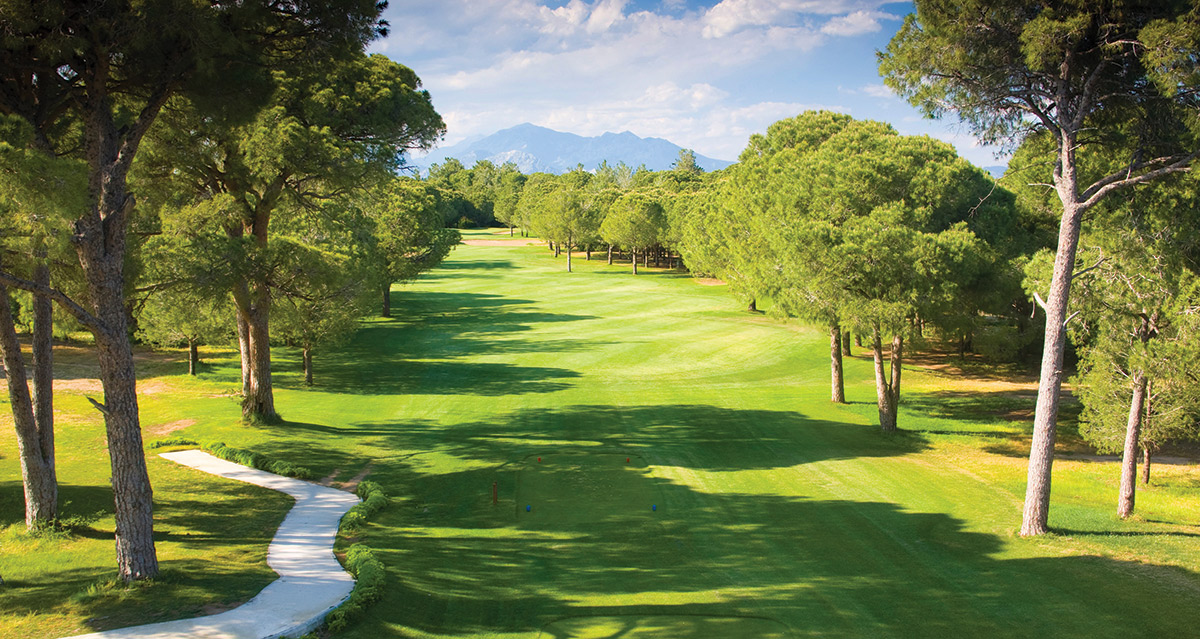
The classy Sir Nick Faldo design at Cornelia Golf Club dates from 2006 and consists of three 9-hole loops, named, charmingly, Tiberius, Sempronia and Galus. The three nines blend to create three different 18-hole combinations, named, equally charmingly, Prince, Queen and King. Built on either side of a spine of sand dunes, it threads its way through a colony of umbrella pines and, typically for a Faldo design, has several doglegs that place more emphasis on strategic acumen than brute force. Factor in elevated tees, tight drives, numerous beautiful but treacherous lakes, along with par-5s that are genuine three-shotters, and patience as well as skill is required to construct a decent score.
The 36-hole Sueno resort also offers strategic golf, where the 18th greens of both the Dunes and Pines layouts are islands surrounded by a lake in front of the hotel.
Five-time [British] Open champion Peter Thomson, one of Arnold Palmer’s close friends, deployed nearly a million heather sprigs in 2008 when he rolled out the course at Regnum Carya Golf & Spa Resort, venue for the past three years of the Turkish Airlines Open, one of the European Tour’s eight Rolex Series events. Cultivated in specially constructed greenhouses at a neighboring nursery, the heather enabled the late, great Australian to create a genuine heathland experience.
Also well worth a visit is Lykia Links, designed by Pete Dye’s son Perry in 2008 and a half-hour’s drive from Belek. As a links the wind can make a huge difference, especially over the final six holes sandwiched between the dunes and the sea. “Lykia Links can play like five different courses on five different days,” is Dye’s description of his baby.
The most recent addition to Belek’s array of golfing gems is Montgomerie Maxx Royal, where the first three Turkish Airlines Opens were staged and where the event returns for its seventh edition this fall (November 7-10).
Colin Montgomerie is rightly proud of his creation. Laid out across 250 acres (there is also a nine-hole floodlit academy course), it blends strategically with trees and sandy ridges. Meanwhile, the Maxx Royal hotel is the perfect complement. Located on a 300-yard stretch of beach with its own pier, it caters for all tastes—families, couples, honeymooners, golfers, business folk and sightseers.
More recently, golf has arrived in Bodrum, Izmir, Ankara, Dalaman and Samsun, but it will take some time before the game takes off at this eclectic mixture of destinations the way it has in Belek.

Follow Us On


| Cookie | Duration | Description |
|---|---|---|
| cookielawinfo-checkbox-analytics | 11 months | This cookie is set by GDPR Cookie Consent plugin. The cookie is used to store the user consent for the cookies in the category "Analytics". |
| cookielawinfo-checkbox-functional | 11 months | The cookie is set by GDPR cookie consent to record the user consent for the cookies in the category "Functional". |
| cookielawinfo-checkbox-necessary | 11 months | This cookie is set by GDPR Cookie Consent plugin. The cookies is used to store the user consent for the cookies in the category "Necessary". |
| cookielawinfo-checkbox-others | 11 months | This cookie is set by GDPR Cookie Consent plugin. The cookie is used to store the user consent for the cookies in the category "Other. |
| cookielawinfo-checkbox-performance | 11 months | This cookie is set by GDPR Cookie Consent plugin. The cookie is used to store the user consent for the cookies in the category "Performance". |
| viewed_cookie_policy | 11 months | The cookie is set by the GDPR Cookie Consent plugin and is used to store whether or not user has consented to the use of cookies. It does not store any personal data. |